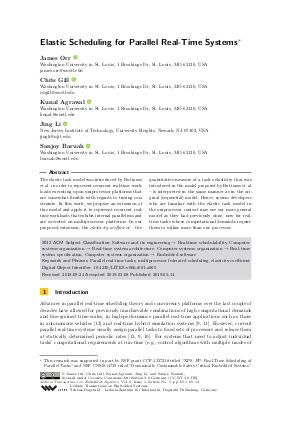LITES-v006-i001-a005.pdf
- Filesize: 0.54 MB
- 14 pages

 Creative Commons Attribution 3.0 Germany license
Creative Commons Attribution 3.0 Germany license

The elastic task model was introduced by Buttazzo et al.~in order to represent recurrent real-time workloads executing upon uniprocessor platforms that are somewhat flexible with regards to timing constraints. In this work, we propose an extension of this model and apply it to represent recurrent real-time workloads that exhibit internal parallelism and are executed on multiprocessor platforms. In our proposed extension, the elasticity coefficient - the quantitative measure of a task's elasticity that was introduced in the model proposed by Buttazzo et al. - is interpreted in the same manner as in the original (sequential) model. Hence, system developers who are familiar with the elastic task model in the uniprocessor context may use our more general model as they had previously done, now for real-time tasks whose computational demands require them to utilize more than one processor.










Feedback for Dagstuhl Publishing